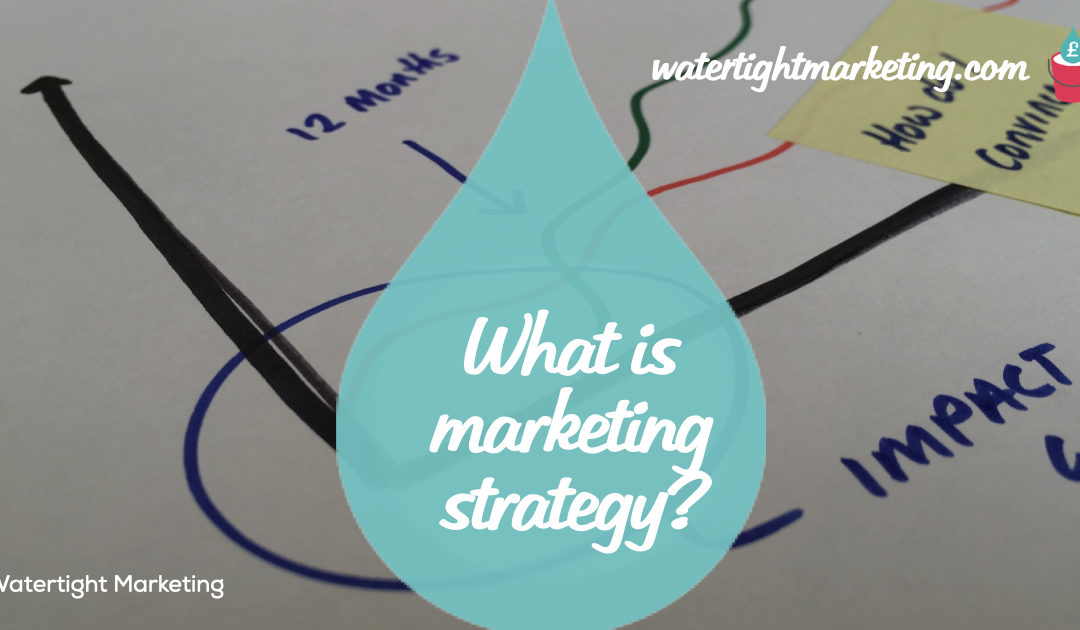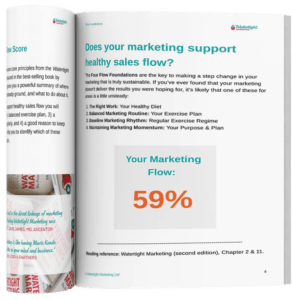Reading Time: 5 Minutes
One of the key things we work on with clients is anchoring marketing activity into the business strategy. To do this, we often have to unpick the ideas people have about what a marketing strategy is, and the role of a strategist in doing it. We invite you to join our #WatertightWednesday roundtable on the topic to take this discussion further. ~ Bryony Thomas, Author | Watertight Marketing
Everything in marketing seems to be a ‘strategy’ these days, each with its very own guru selling you an online course on how to master it — probably in a 5-day challenge. I’d argue that if you can master it in 5 days, in isolation and with remote learning, it’s almost certainly not strategic. It might be a useful (even breakthrough) tactical enhancement, but a strategy it is not!
Stabilising the Flow Foundations
At its most fundamental, we break marketing strategy and operations down into the four Flow Foundations (See: Chapter 2 and 11 of Watertight Marketing – second edition):
- First Flow Foundation: The Right Work (F1) – asks you ‘What are you offering to Whom?’
- Second Flow Foundation: Balanced Routine (F2)– asks you ‘How will you support that decision?’
- Third Flow Foundation: Baseline Rhythm (F3)– asks you ‘When will you do that, and how will you know it’s working?
- Fourth Flow Foundation: Maintain Momentum (F4) – asks you ‘Why are you doing it?’
Visualise these four foundations as the legs of a table, with F1 and F4 on the left, and F2 and F3 on the right. The left two legs are the strategic pillars, and the right two legs are the operational (or tactical). A marketing strategist is the person that bridges the two sides of the table, making it stable.
This means that:
- Strategic questions are: Why, What and to Whom?
- Operational and tactical questions are: How, When, and Is it working?
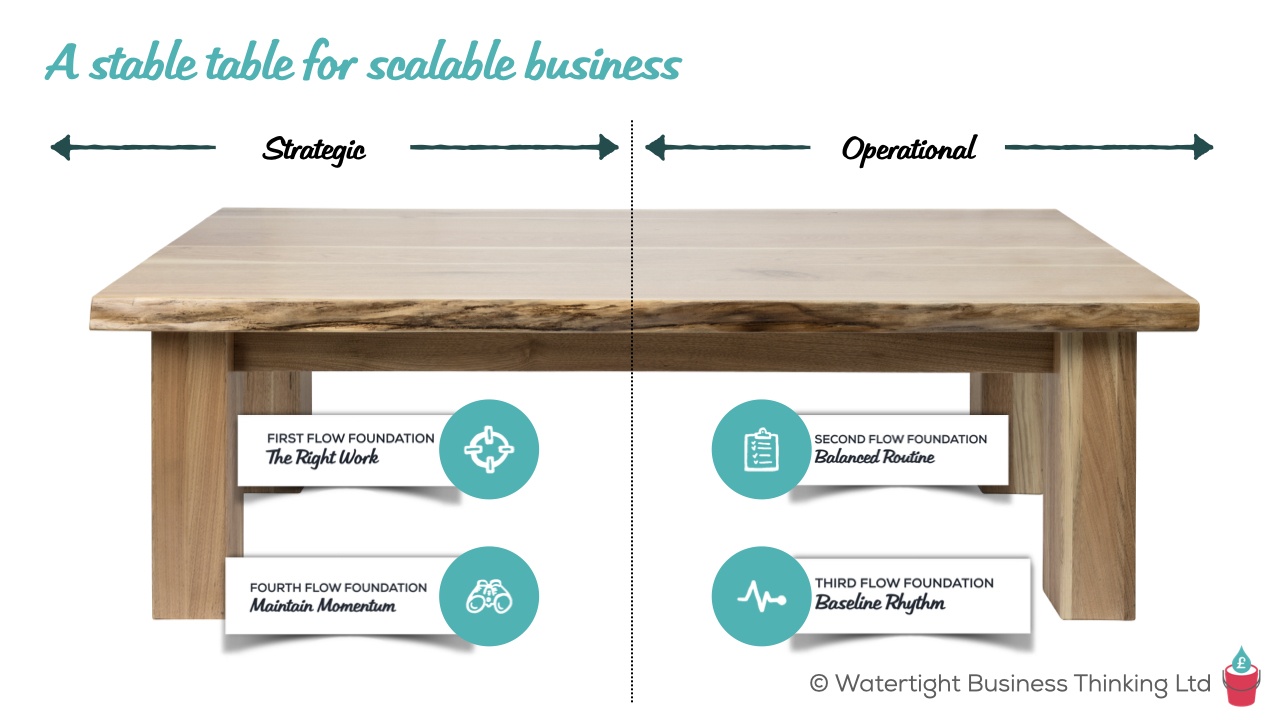
Strategy is a sequence of great questions
It’s pertinent to note here that what we’re outlining here are questions. The key role of a marketing strategist is to ask the right questions. They may need to bring in specialists and advisors to help get to the answers. But, crucally, they know the questions that need to be asked, and can recognise and make decisions when they’ve been adequately answered. You should be incredibly wary of anyone purporting to already know the answers.
What we often find is that good questions are being asked, but in the wrong order. So, the first task of the strategist is to sequence the questioning so that the answers stack one onto the next into a roadmap and mean that it’s a journey, not just a map.
Do you have a stable table?
It’s a given that scaling a business is a juggling act. In the sequence of questions, the very first one is where are we now. We frame this as establishing how stable the table currently is. Getting a benchmark against the four Flow Foundations establishes whether you’re trying to juggle on a wonky table.
If F4 and F1 are strong but F2 and F3 are weak – you have a business that has probably established a great reputation in a clear market. This puts you in a good place to see the benefit of implementing operational excellence. If this is you, you are probably feeling frustrated that your brilliant offering doesn’t seem to get the traction it deserves.
If the reverse is true, with F2 and F3 strong, but F4 and F1 are weak – you have a business that is executing a clear set of tactics but perhaps in the wrong market with a dull offering, or with no real vision- and values-informed substance to it. You’ll have a business that is frustrated that “we’re doing all the right things but it’s not working”.
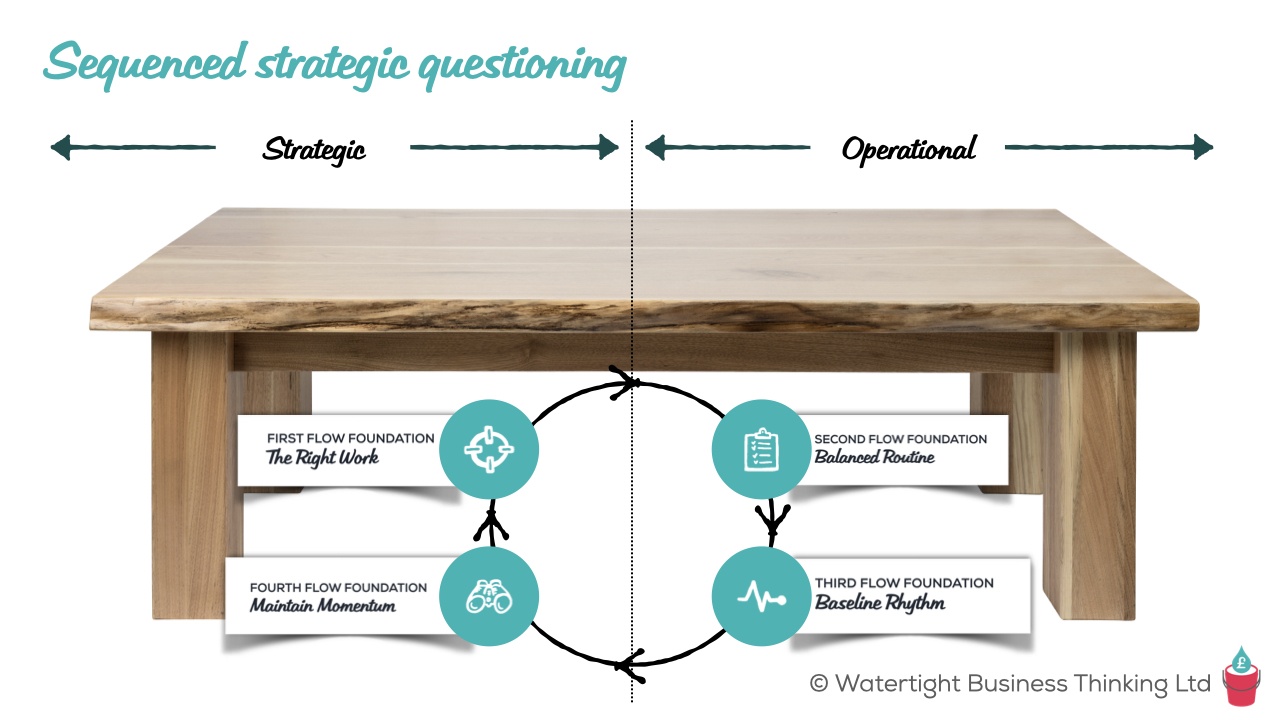
So, who is a marketing strategist?
The role of the marketing strategist is to bridge this, usually in this sequence:
- They will need to understand, inform, and articulate F4 – the output from this is an energising Vision, clear Values, and mapped Milestones. (This is fourth in our model because we tend to pick up with our clients when this box is ticked)
- Against this backdrop, a strategist will need to research and validate the Audience and understand the market, and work across the business to structure a Complete & Compelling Proposition bringing together F1.
- Only then can they map the set of tools and techniques that will support the decision of people in that audience in choosing that proposition, thereby ticking F2.
- That plan then needs to be enacted and measured to ensure that the map is followed in practice rather than just existing on paper, which is our F3.
You can’t ever truly outsource strategy
There are literally hundreds of thousands of marketing suppliers that can help you with the How and When, but none of what they do will work until you know Why, What and to Whom.
This is why an Instagram {or Insert Marketing Tactic Here} Strategy is not a strategy, it is a tactic in your plan that needs to be effectively enacted… but, without true strategic backdrop no hashtag in the world will get you anywhere.
In a business that is scaling from 7 into 8 figure turnover, this person responsible for making sure these questions are answered is called a marketing director.
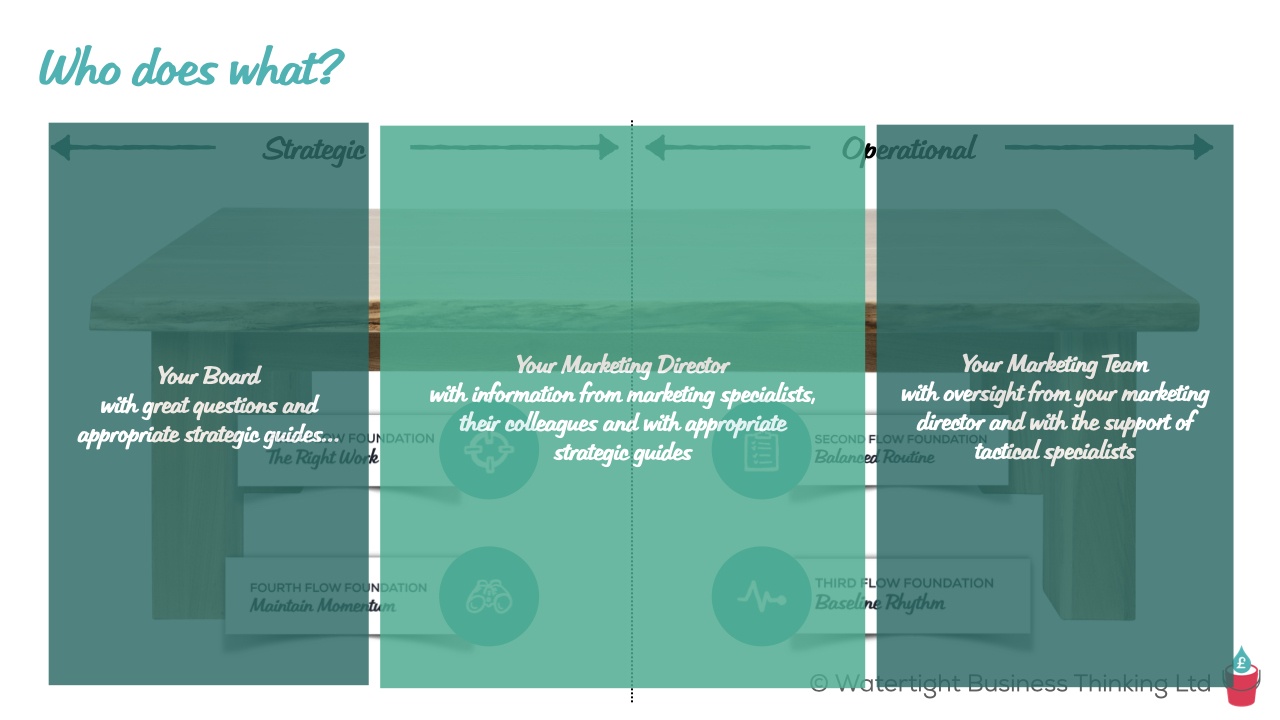
If you’ve felt any of the frustrations of marketing not quite seeming to work, wondering whether you need a senior marketer when you’ve successfully got to here without one, or you are the senior marketer who wants to get this penny to drop, benchmarking your business against the four Flow Foundations is a very good place to start. You can get a snapshot of this in our 10 minute test.
What we often find is that a business has reached their first phase of growth through either strategic clarity or operational excellence, and their next phase is bridging and balancing the two.
© Watertight Marketing Ltd
Listen to the podcast episode
You can now listen back to the #WatertightWednesday roundtable discussion on this topic.
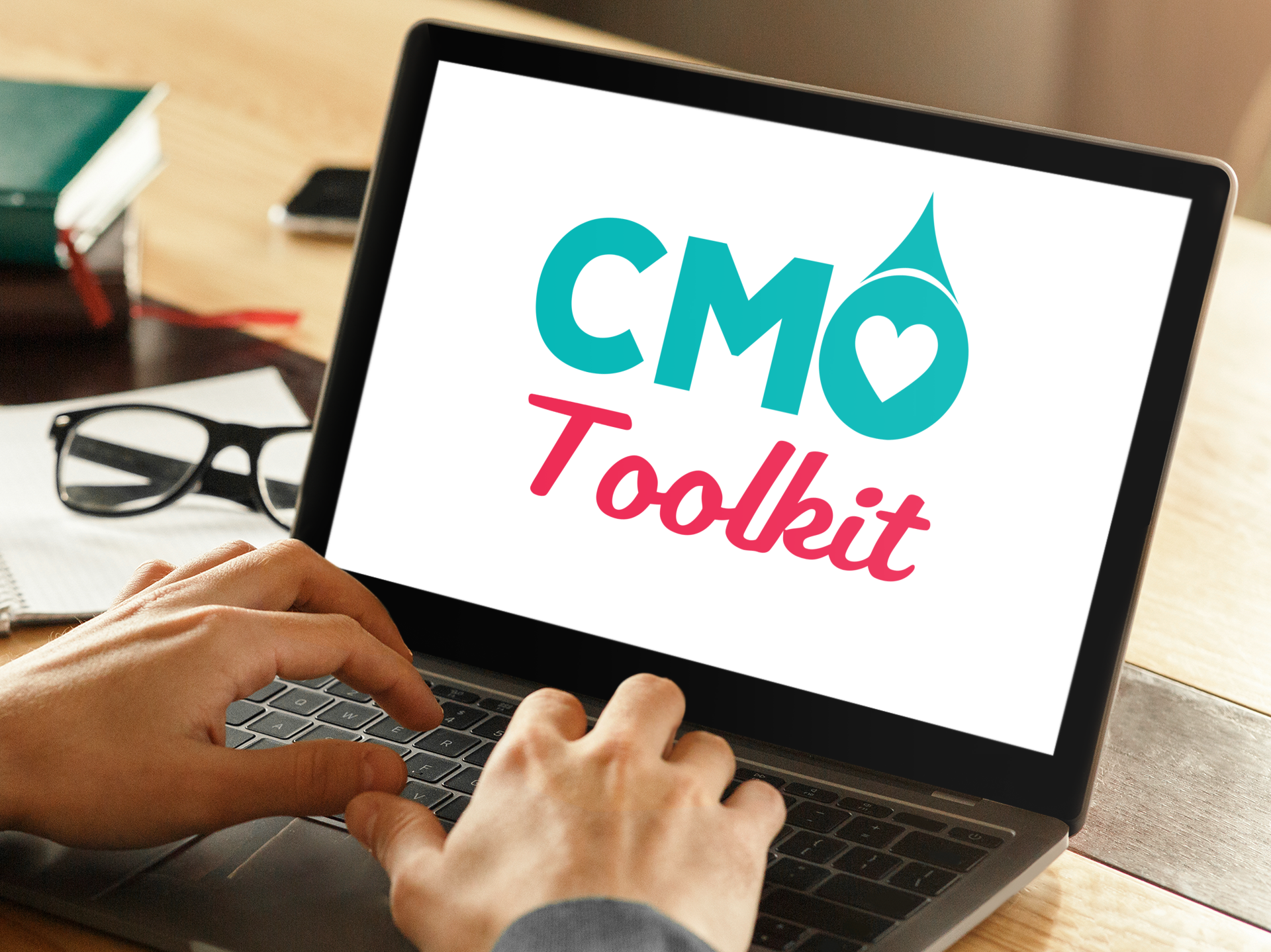
Subscribe to the CMO Toolkit
Would you like to get your hands on the tools, frameworks, templates, workshop packs, slides, and analysis tools we use with our clients? It’s all waiting for you.
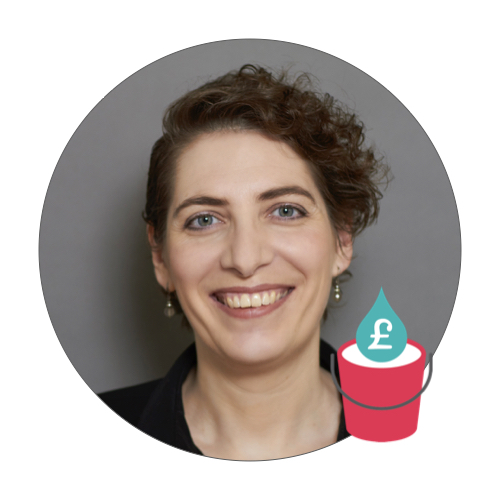
Bryony Thomas
Author & Founder, Watertight Marketing
Bryony Thomas is the creator of the multi-award winning Watertight Marketing methodology, captured in her best-selling book of the same name. She is one of the UK's foremost marketing thinkers, featured by the likes of Forbes, The Guardian, Business Insider and many more, and in-demand speaker for business conferences, in-house sales days and high-level Board strategy days.

